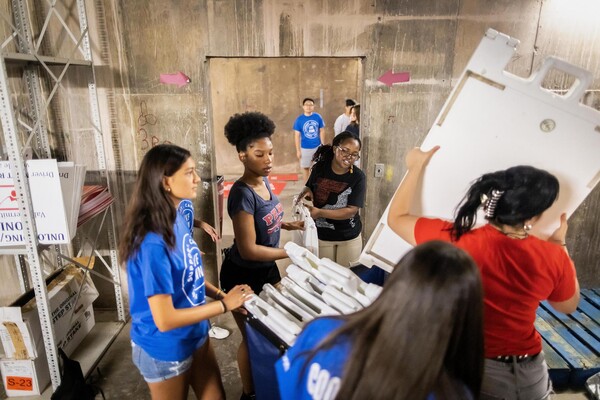Out & About: Drawing their own conclusions
The exhibit now up on the walls of the Arthur Ross Gallery brings to Penn some remarkable drawings by 19th-century art stars like Degas, Cezanne and Ingres. Even more remarkable, perhaps, is the fact that it’s here at all.
For years—a decade at least—Dilys Winegrad Gr’70, director and curator of the gallery, has had her eye on the Ashmolean Museum’s drawings, a selection of which makes up this exhibit. Her familiarity with the museum goes back to her student days at Oxford, when she studied next door in the Taylorian Library. “I was very drawn to the paintings,” said Winegrad, “but there were wonderful archaeological artifacts and Asian and Classical pieces. The place is a warren!”
Winegrad’s goal in persuading the Ashmolean to lend some of its holdings was twofold; she knew Penn would be receptive to the drawings, which range from spontaneous charcoal sketches to highly detailed graphite compositions, and she also wanted to get the word out about the Ashmolean, an institution much better known on the other side of the Atlantic.
That the Ashmolean rarely lends multiple holdings anywhere, let alone to a small university gallery, did little to deter Winegrad, a 20-year veteran of the gallery and a native Brit. Happily, the drawings’ curator, Jon Whitely, had just designed an exhibit for London’s Wallace Collection and agreed the time was right to do the same at Penn.
Up close and personal
When Associate Professor and Graduate Chair of the History of Art Department Susan Sidlauskas saw the exhibition proposal, her curiosity was piqued enough to design a graduate seminar class around the drawings. So far so synergistic, but when an anonymous donor supplied funds to send Sidlauskas and her students to England to check out the drawings in person, the enterprise took on another dimension altogether.
One of the students who took the trip was Sara Brady, who’s also the Arthur Ross Gallery’s administrative assistant. “It made a huge difference,” said Brady about seeing the drawings up close and personal. “We were able to hold them with white gloves and look very closely at the details. Some of them even had verso images on the other side, which we had no idea about prior to the visit. The slides just didn’t do them justice.”
To encourage close study, each student was given four or five drawings to research. Brady’s bunch included a watercolor and gouache sketch of a Turkish merchant by Gabriel-Alexandre Decamps. Even to art buffs, that’s hardly a household name. And the exhibit has its share of unsung heroes. As Winegrad points out, in addition to a Renoir, there’s a Renouard. “They sound practically the same, but do you know Renouard?”
Tastes of the times
The subject matter of the drawings covers a wide spectrum, too, from John Ruskin’s majestic profile of a lion, sketched from life in graphite and watercolor, to Degas’ study of a naked woman, fresh from the tub, drying herself with a towel, seemingly unaware of any witness.
Since the collection reflects 19th-century tastes, there are notable gaps—nothing Spanish, little by the Italians, a dearth of Scandinavian drawings—and examples of work by artists like Bouguereau who have only recently emerged from derision by the artistic cognoscenti. The Bouguereau in this exhibit, a delicate rendering of a peasant woman in pencil on fine cream paper, demonstrates both why he was scorned—his work has a certain slickness of technique—and why it’s good to see him back in favor.
Once on American soil again, the students wrote up their research for the exhibit’s catalogue. “You develop this relationship almost with these drawings that you spend a semester with,” said Brady. “There are others in the exhibit that I do like, but you get attached to your own particular drawing. I really do love my Decamps.”
“Master Drawings (1800-1914) from the Ashmolean Museum, Oxford” continues through June 27 at the Arthur Ross Gallery, 220 S. 34th St. Gallery hours: 10 a.m. to 5 p.m, Tuesday through Friday; Noon to 5 p.m, Saturday and Sunday.







